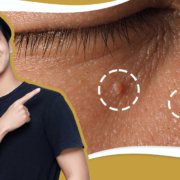The Benefits of Beauty Rest
While touted as a stand-in for a good night’s rest, beauty sleep holds real benefits. In fact, getting enough quality rest can even improve our skin’s health and overall appearance.
The Importance of Sleep
Before hopping into skin health, let’s quickly discuss how sleep benefits our general wellness. Sleep is a fundamental biological process essential for maintaining physical and mental health. But how?
During our resting hours, our bodies are able to relax, recoup and repair. Our brains can process and consolidate information collected throughout the day. Most importantly, sleep’s crucial role in regulating our immune system helps build up our defenses against diseases and infections.
Sleep is important for hormone regulation as well. Our hormones are responsible for a wide range of bodily functions, including our mood, metabolism, and appetite. When we don’t get enough sleep, our hormones can become imbalanced, leading to a variety of health problems. And speaking of those hormones…
The Link Between Sleep and Skin Health
When we sleep, the released hormones help repair and regenerate our skin cells in a process called autophagy. This is essentially the equivalent of a cellular clean-up. Autophagy helps clear our skin of damaged cells and debris, leading to a brighter, more even complexion.
Slumber also plays a crucial role in regulating our skin’s hydration levels. During rest, we produce a hormone called vasopressin, which helps to regulate our body’s water balance. This means that when we get enough sleep, our skin is better able to retain moisture, which can help to prevent dryness and improve overall skin texture. But that’s not all!
Rest even helps regulate inflammation, a natural response of the immune system. However, when it becomes chronic, it can lead to a variety of health complications, including skin problems such as acne, eczema and psoriasis. Getting proper rest helps regulate inflammation, which can aid in preventing these skin problems.
Finally, sleep is also important for regulating our stress levels. When we don’t get enough sleep, our bodies produce more stress hormones like cortisol, which can contribute to a variety of skin problems, including acne and premature aging.
Our expert dermatologists are here to help you perfect your custom skincare plan. Shinagawa Aesthetics educates you on your skin, its unique needs, and how to attain healthy, happy, glowing skin. Schedule an appointment with one of our board-certified dermatologists.
Don’t sleep on the importance of skin health. Contact us today!
Call our Patient Care Lines: (+632) 7-368 5238 l (+63) 917 862 7454 l (+63) 921 217 0517 for inquiries, questions, and appointments or talk to our consultants via LiveChat at https://shinagawa.ph so we can address and answer them for you.






